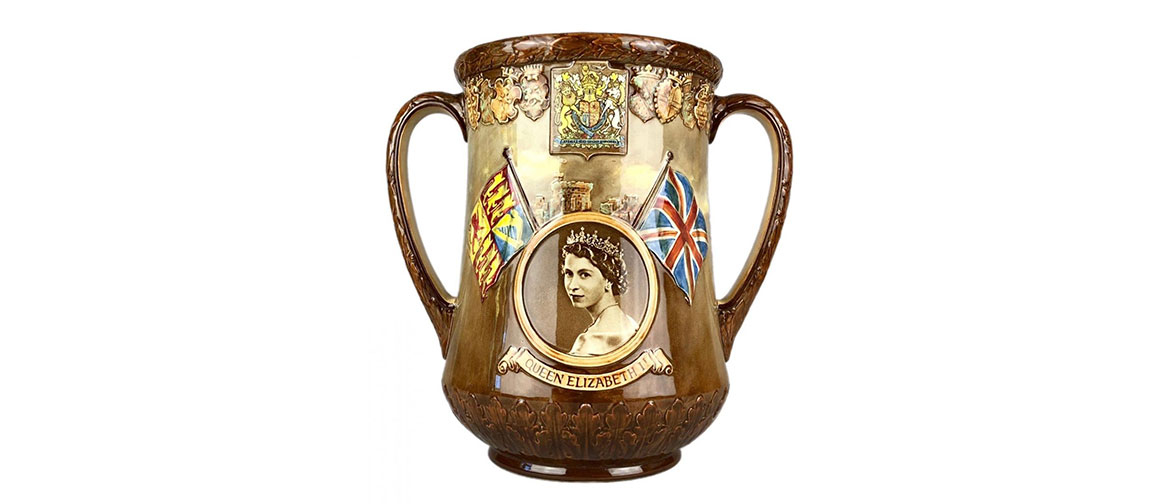In the Te Manawa collection, commanding attention with its sheer size, is a two-handled ceramic drinking vessel called a loving cup. It is massive enough that it almost needs a display case to itself.
Loving cups are meant to be used with both hands while toasting love, friendship, unity or similar sentiments. They are typically not much bigger than an everyday drinking vessel. For the occasion of a monarch’s coronation, though, the team at Royal Doulton decided to go large.
Their famous art director Charles Noke had set the outsized standard in the 1930s. He produced a cup for Edward VIII’s cancelled coronation, and another for George VI in 1937. Noke died in 1941 after an innovative and prolific career, but when Elizabeth II took the throne, designer Harry Fenton followed in his footsteps, and created the cup that today lives in the Te Manawa collection. Only 1000 were made; ours is number 514. It was donated by the family of Margaret Weir (née Watchorn).
The cup stands at almost 30cm tall and has a capacity of at least 5 litres. Attempting to use it for its traditional function would be quite the physical challenge. Luckily for banquet-goers, display is the only purpose of works like this.
Royal symbols such as the Royal Standard and the coat of arms adorn the front, together with a portrait of Elizabeth II. Unusually for such a commemorative object, the back is given over to Elizabeth Windsor’s namesake, Queen Elizabeth I. She is depicted in later life, surrounded by the ships of the Royal Navy. In the late 16th century, these were turning England into the Western Hemisphere’s premier naval power.
The association of loving cups with the English royal family is a long one. According to legend, in 978 someone killed King Edward the Martyr while he was holding one. With both hands lifting the cup, he was unable to defend himself. This account of his death is very likely apocryphal; however, it gave rise to ceremonies surrounding the use of the loving cup that are still observed in some places today.




